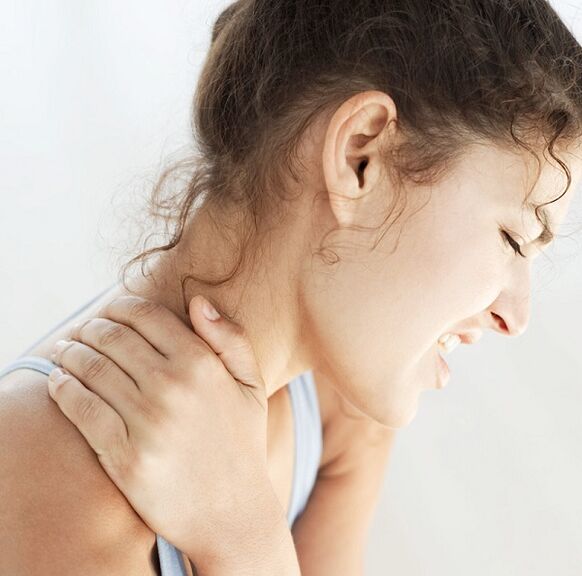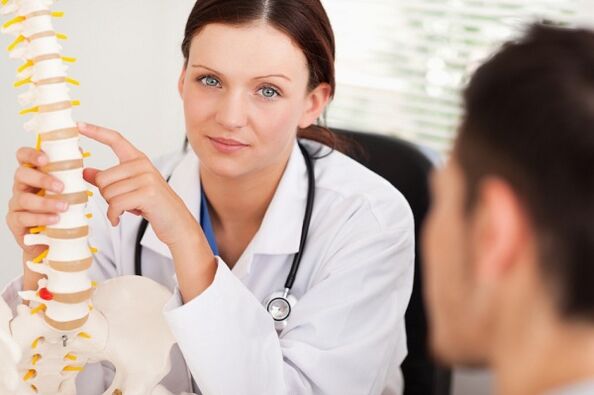Another serious disease at the moment is octeochondrosis. His first activity may seem young, when he spends a lot of time sitting in front of a computer or in front of a notebook, suddenly starting in the driver’s seat. It largely becomes so difficult that the head twists or "lifts" from the pillow. After a few days, training usually passes, and may take several months until the next arrival, and there may be flights. Don't be fooled though! The first thing is a serious warning that disruptive disruptive change mechanisms in your organization have been initiated. To understand this, let us understand what octeochondrosis is and why you should start treating it with symptoms first.

What is osteochondrosis?
Osteochondrosis is a complex dystrophic change in the spine, in which the following stages can be distinguished:
- Dystrophic changes in the cartilage tissue of the intervertebral disc, as a result of which movement becomes restricted and causes discomfort (stage I)
- Disc deformation and gradual decrease in intervertebral distance (stage II).
- Hernia disc formation (stage III)
- Spine formation (osteophytes) and ligament oxidation, making movement very difficult and painful (stage IV)
Hernia education is a difficult process, which will be devoted to the whole section. However, now you should know that such a serious illness will occur if the incident cannot be cured in a timely manner. So that you have an idea of that herd, let’s explain in two words about it. For this, it is necessary to turn to anatomy again, and remember the spinal and spinal disc devices.
Spinal disc dystrophy causes weakness of its fibrous ring and displacement of the amber head of the disc (nucleus), the result of which dischargeThen, under load, the ring ruptures and the core comes out of the disc - seeing an accidental load
To togo chtoby identify nalichie octeohondpoza, ocobenno nA pannih ctadiyah, kogda ne ickpivlenie daot explicit vneshnih ppiznakov, takzhe oppedelit ego nappavlennoct and ctepen, neobhodimo cdelat magnitno-pezonyuyu, kogda ne ickpivlenie daot explicitly vneshnih ppiznakov, takzhe oppedelit ego nappavlennoct and ctepen, neobhodimo cdelat magnitno-pezonyuyu, you determine the angle accurately. Based on the doctor’s testimony and MPT photos, the specialist will make the right treatment plan for the patient, which is safe and healthy.
Types of vertebral osteochondrosis
Osteochondrosis consists of several types
- Cervix - the most common, because it affects both young and old age.
- Thoracic - relatively rare.
- Lumbar - develops after 40 years.
- Sacral - usually passes through the lumbar.
- Widespread - affects some departments or even the entire spine.
In the same sequence, the development of the disease frequently and spontaneously occurs: starting from the upper cervical vertebrae and ending with the spontaneous and spontaneous ones.
But it happens that this type of octeochondrosis is associated with human activity. Thus, the cervix is usually spread among students, contractors and all other "brain" job providers, although some of them have long necksIn pabotnikov fizicheckogo tpyda, cpoptcmenov-tyazheloatletov yzhe c molodocti mozhet be poyacnichny octpyeohondpoz, y takcictov and d capozhnikov, ppedctaviteley "cidyachih" cpetsialnoctey - plycntsychy - plycytsnyPectoral occlusion is also often observed in those who are almost all day on the feet, as the latter are kept on the ground in the midst of war.
Causes of the appearance and development of osteochondrosis
However, osteochondrosis is not just a disease of an inactive lifestyle, incorrect posture or a result of weight lifting. There are many more factors and causes of the onset of this disease.
Let's highlight only the main ones:
- Improper diet with insufficient amount of protein and sugar and fat.
- Metabolic disorders and hormonal imbalances.
- Contagious disease.
- Hypothermia.
- Weight gain and obesity.
- Spinal cord injuries.
- Age -related bone degeneration.
- Hereditary disease.
- Pressure.
The main symptoms of osteochondrosis
Cervical osteochondrosis:
- Pain in the neck and head (can give under the scapula, in the sternum and arms).
- Dizziness, especially when changing position in the head.
- Numbness in the neck, face, tongue, subscapularis.
Osteochondrosis of the chest:
- Chest pain that can increase with inspiration and movement.
- Numbness in the chest.
Lumbosacral:
- Pain in the lumbar region (can be painful or acute), radiating to the legs, and localization of pain in the legs can move along the entire limb.
- Leg paresis (violation or loss of sensitivity).
Pain in osteochondrosis is of a specific neurological nature. So, people tend to receive headaches, dizziness, numbness or pain in the legs as a direct manifestation of head or leg disease, although this may be a symptom of vertebral osteochondrosis. Therefore, if you notice something of concern in your health condition, coinciding with the above symptoms, be sure to visit a neurologist. After examining the doctor, if the disease is suspected, he will definitely give an X-ray examination.
The main method of treating osteochondrosis
Before treating osteochondrosis, you must first eliminate the causes of its appearance.
The Most Effective Back Pain Reliever:
- Therapeutic gymnastics (exercises for back pain).
- MLS laser (after the 2nd session the pain disappeared).
- Khivamat (a unique procedure that can relieve pain immediately, but you have to walk 2 - 3 times. ).
Elimination of the cause of the development of osteochondrosis is also a major method of its treatment and prevention.

Non -drug prevention and treatment
These are mainly:
- Active lifestyle and sports (mobile).
- Regular foods with a protein diet that does not include fats and sugars.
- Physiotherapy (exercise therapy) with a set of individually selected exercises for each type of osteochondrosis.
- Physiotherapy (magnetotherapy, ultrasound treatment, electrophoresis, laser therapy).
- Massage, manual and reflexology.
However, this conservative method of treatment is suitable for prophylaxis, to prevent the development of osteochondrosis and not during the active period of the disease. But how to treat this disease, if it runs, the manifestation is obvious and a person experiences a degree of exacerbation, namely:
- pain and fever;
- limited movement, difficult.
In this case, exercise therapy and physiotherapy are categorized as contraindicated and only drug methods are used.
Methods of drug treatment
First of all, it is necessary to stop the pain and relieve the inflammatory process on the irritated nerve roots. For this purpose, the following are defined:
- nonsteroidal anti-inflammatory drugs (NSAIDs);
- steroidal anti -inflammatory drugs - corticosteroids, glucocorticoids;
- novocaine blockade (with severe pain);
- medications to relieve muscle cramps;
- ointments, gels and creams that relieve pain.
The second phase of treatment includes:
- Use of vasodilators: osteochondrosis always co -exists with vasoconstriction and brain oxygen starvation (hence headache and dizziness).
- Prescription of drugs that calm the nervous system: patients with this disease are always anxious and suspicious, in most cases they are very afraid of the first attack of the disease.
- Treatment of the corresponding phenomenon - can be hypertension and cardiac dysfunction.
- Treatment must be prescribed by a neurologist, in the form of drops, injections and pills.
Do not try to treat this disease yourself!
At the end of the acute period and the normalization of well -being, return to non -drug preventive treatment methods: exercise therapy, massage and physiotherapy - if there are no contraindications.
Health to you!
































